#megaladapis
Explore tagged Tumblr posts
Text


Another Saturday another formation stream!
This time we visited the subfossil wonders of Madagascar!
#sciart#paleoart#paleostream#holocene#pleistocene#madagascar#elephant birds#aepyornis#lemurs#crocodile#megaladapis#tortoise#fossils
449 notes
·
View notes
Text

Kidoky
Altura: 150 metros (bipedo)
Peso: 90,000 toneladas
Primer Avistamiento: Mahajanga [Tierra: Teratoverso]
Guarida: Arco Montañoso Oriental [Tierra: Teratoverso] Ciudad Portuaria [Avatarverso]
Controles: Tierra Control [Puño del retumbar] Fuego Control [Electricidad] Agua Control [Marejada hedienta] Energia Control [Telequinesis]
Aspecto: Megaladapis + Archaeoindris
Aliados:
Humanos: Aang, Katara, Soka, Iroh, Zuko
Kaijus y otras bestias: Anguirus, Godzilla, Mothra, Rodan, Anguirus
Enemigos:
Humanos: Ozai y Azula, Aang, Katara, Soka, Iroh, Zuko (Estos ultimos anteriormente)
Kaijus y otras bestias: Oodako
#avatar aang#avatar: the last airbender#avatarverse#kaiju#tokusatsu#cryptozoology#cryptids#kidoky#megaladapis#archaeoindris#madagascar#indri
2 notes
·
View notes
Text

Spectember day 9: Marsupial Madness
Around 25 Millions of Years in the future, after the collision of Australia into the Asian Continent and a great Faunal Interchange that caused many animals who never met each other to now live closely, making for many extinctions and speciations, such as that of Tree Kangaroos, who managed to survive the interchange and actually thrive in the future forests and jungles of Asia.
One such clade of Kangaroos evolved to closely resemble the now extinct lemurs from Madagascar, with a form similar to that of *Megaladapis spp.*. With long arms, a short tail and long legs adapted for both walking and jumping from tree to tree. These animals do live like that, eating the leaves of trees and bushes, but also feeding on ground animals such as invertebrates, reptiles and small mammals.
However the lemur comparison is not the only to be made here, as the long arms and fingers of the so called Marsupial lemurs are also adapted for brachiation, with somewhat flexible shoulders almost like those of the now also extinct apes.
#spectember#spectember2024#art#my art#illustration#worldbuilding#spec bio#speculative biology#spec evo#speculative evolution#speculative zoology#convergent evolution#tree kangaroo
22 notes
·
View notes
Text
more.
Fang the sea mink (Neogale macrodon)
Bark the giant short-faced bear (Arctodus simus)
Bean the imperial woodpecker* (Campephilus imperialis)
Tangle the koala lemur (Megaladapis)
Whisper the dire wolf (Aenocyon dirus)
Jet the Bermuda hawk (Bermuteo avivorus)
Wave the Jamaican golden swallow (Tachycineta euchrysea euchrysea)
Storm the Guadalupe storm petrel* (Hydrobates macrodactylus)
Surge the Malagasy aardvark (Plesiorycteropus)
Kitsunami the Tephrocyon
Mimic the Palaeoctopus newboldi
Clutch the Didelphodon vorax
Dr. Starline the Patagorhynchus
Dr. Eggman, Neanderthal (Homo neanderthalensis)
* = It is uncertain whether the species is truly extinct or if it is critically endangered. The IUCN lists the species as “critically endangered (possibly extinct).”
Pictures of these Beasts™️ below:
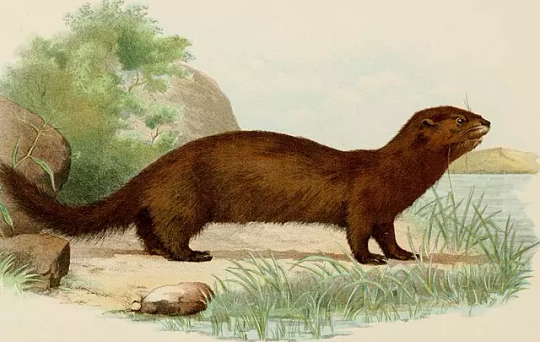
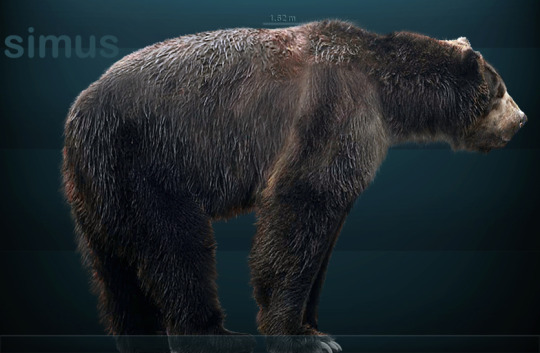

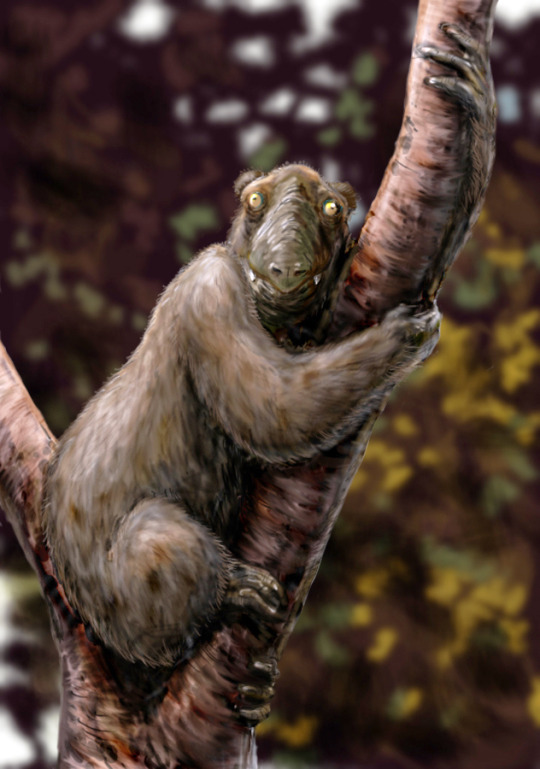


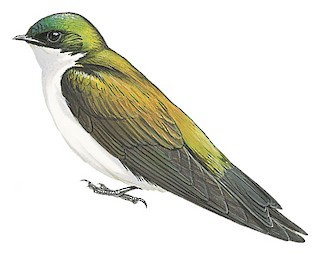
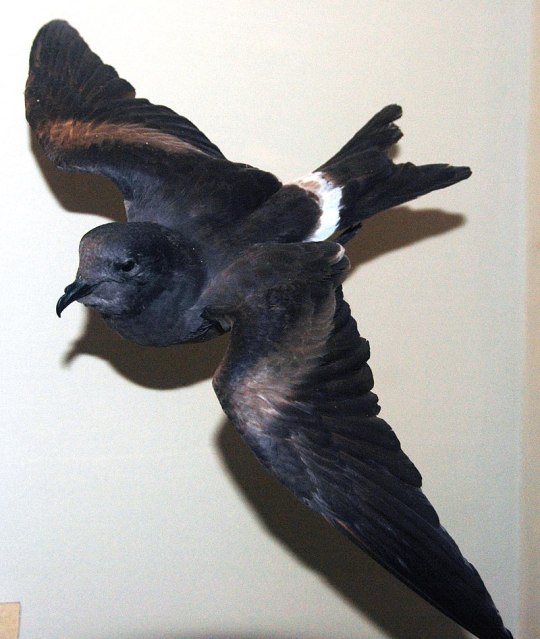
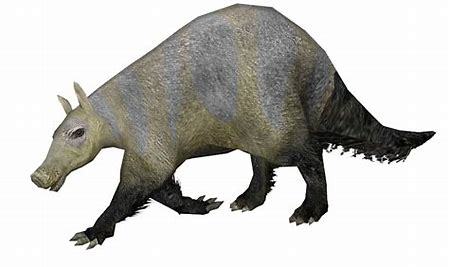



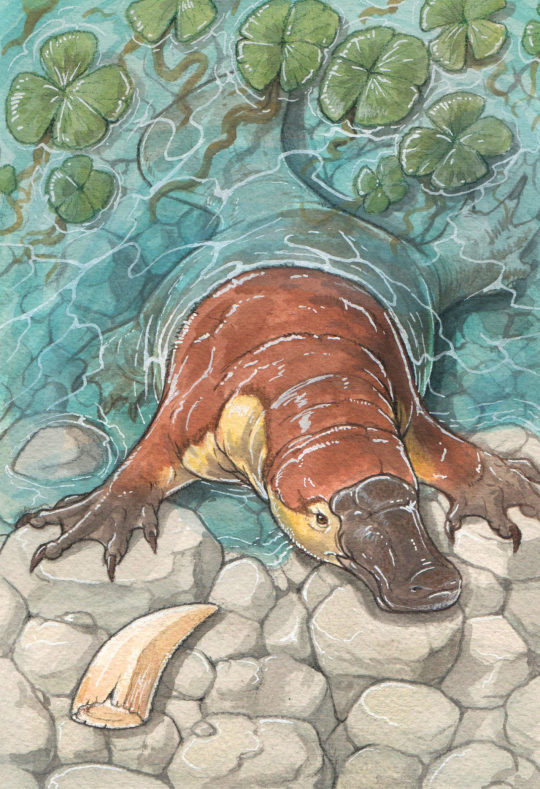

sonic characters as extinct prehistoric species
Sonic (& Shadow, Silver, and Amy) the Amphechinus
Miles “Tails” Prower the Vulpes stenognathus
Knuckles the Steropodon
Rouge the giant vampire bat (Desmodus draculae)
Cream the Nuralagus
Big (and Blaze) the saber-toothed cat (Smilodon)
Vector the Deinosuchus hatcheri
Espio the Barbaturex
Charmy the Ctenoplectrella viridiceps
Infinite the Arno river dog (Canus arnensis)
Mighty the Doedicurus
Ray the Paenemarmota
Pictures of these Beasts™️ below:
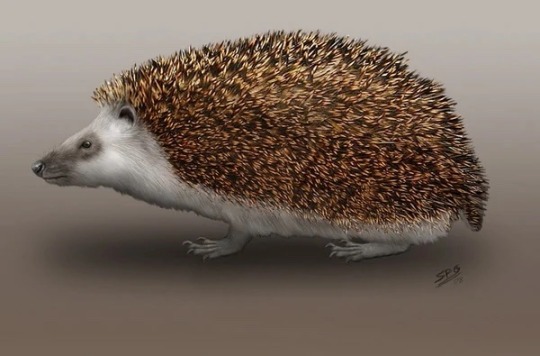
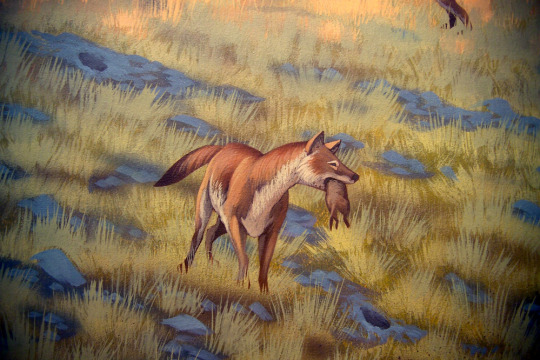

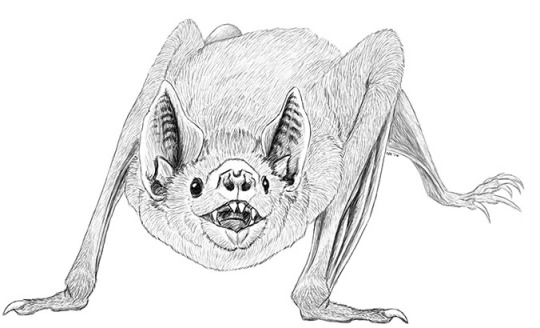
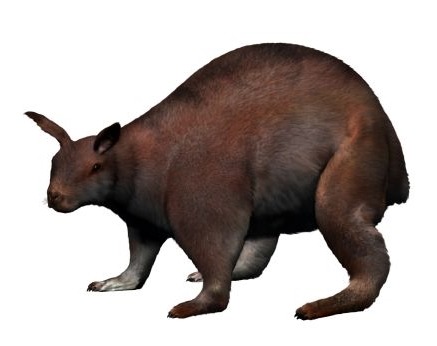
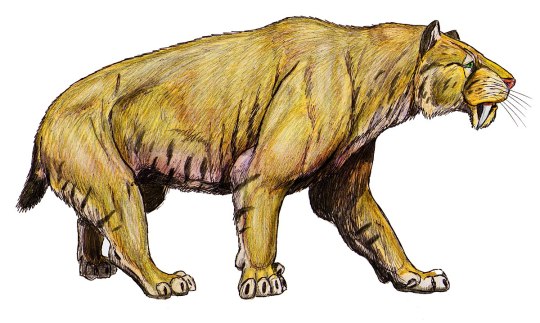



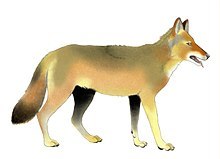


13 notes
·
View notes
Text

†Megaladapis madagascariensis
Art credit: Roman Uchytel
Another recently-extinct lemur is Megaladapis- and this was quite possibly the weirdest lemur to ever live. This was a large arboreal herbivore, but with a skull more typical of an ungulate than a primate, with a long jaw and eyes on the sides of its skull, instead of the front. It was also quite large, and may have weighed up to 188 pounds (85kg).
#markhors-menagerie#primates#basal primates#lemurs#animal facts#fun facts#animals#biology#palaeontology#prehistoric life#prehistoric animals#extinct lemurs#Megaladapis
6 notes
·
View notes
Text

Megaladapis guards its territory on top of tree trunk. Homage to iconic Empire state building scene of original King kong.
8 notes
·
View notes
Text
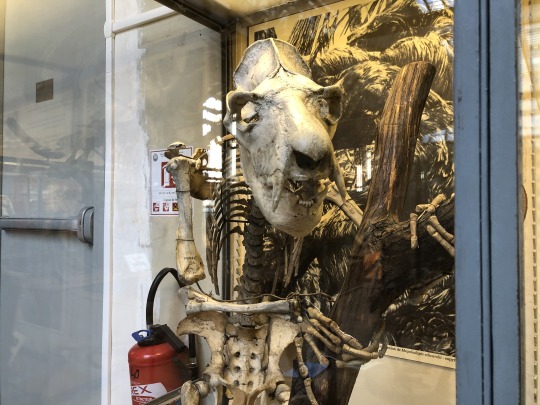
Megaladapis, a giant lemur!
2 notes
·
View notes
Photo

Island Weirdness #20 -- Megaladapis
While some of the lemurs of Madagascar were surprisingly sloth-like, another lineage of these primates evolved in a different direction entirely.
Megaladapis was built similarly to a koala, with a rather squat body and hands and feet adapted for clinging onto branches. Three different species have been identified, with the largest measuring around 1.5m long (4′11″).
Its skull resembled that of a cow, with eyes on the sides of its head, a long snout, and powerful chewing jaw muscles for processing its diet of tough leaves. It also had a very unusual nose for a primate, with nasal bones similar to rhinos -- suggesting it may have had an enlarged prehensile upper lip used for grasping foliage.
Much like some of the sloth lemurs, carbon dating of subfossil remains indicates that these “koala lemurs” may have survived until surprisingly recently -- possibly only going extinct about 500-600 years ago.

#island weirdness 2019#science illustration#paleontology#paleoart#palaeoblr#megaladapis#megaladapidae#koala lemur#lemuroidea#lemur#strepsirrhini#primates#mammal#art#madagascar#holocene extinction#oh it's from Madagascar of course it's weird#island weirdness part 1
190 notes
·
View notes
Note
There are some crazy extinct lemur species too!
The first to come to mind were the Palaeopropithecidae, or the “Sloth Lemurs.” They were called Sloth Lemurs as they filled many of the same niches as sloths, both the extant tree sloths and the extinct ground sloths.

(Art of a Sloth Lemur hanging upside down in a tree, next to a much smaller Eastern Gray Lemur, by Peter Schouten. The sloth lemur is tailless and has long arms.)
The largest species of Sloth Lemur was Archaeoindris fontoynontii. Remains are scarce, but it is estimated they were around the size of an adult male gorilla and weighed about 538 pounds. It’s skeleton suggests that it was well-suited for both climbing and walking.
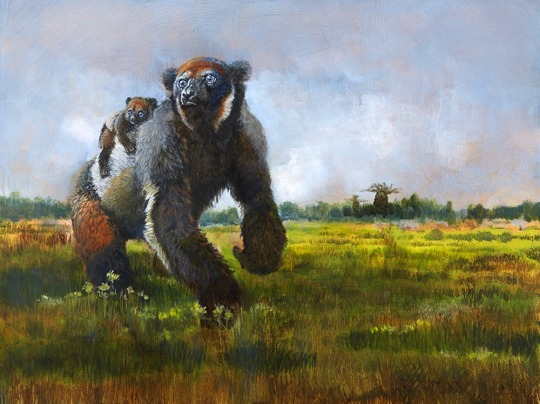
(Painting of an Archaeoindris knuckle-walking in a field with a baby clinging to it’s back, by haritonoff)
Archaeoindris probably went extinct only around 350 BC, with the arrival of humans on Madagascar.
Also filling the niche of another unrelated animal is Megaladapis, also known as the “Koala Lemur”
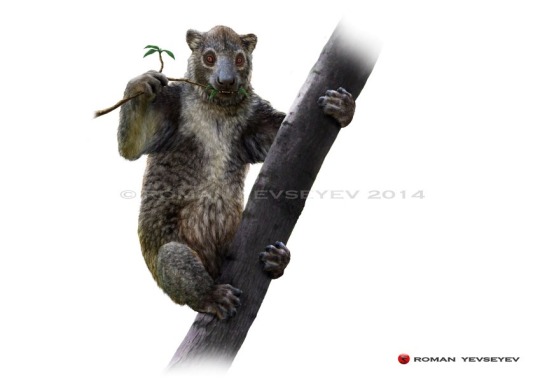
(Art of another tailless lemur hanging onto a branch like a koala. It has a twig in one hand and is staring into the “camera.” Art is by Roman Yevseyev)
Megaladapis was much larger than a koala though, and could measure between 4 and 5 feet in length!
Like the other giant lemurs of Madagascar, Megaladapis was pushed to extinction 500 to 600 years ago due to the arrival of humans.
And, lest we forget, some of the first primates were treeshrew-like animals. These are called Plesiadapiformes, though cladistically speaking all modern day primates are Plesiadapiformes.
This is Dryomomys szalayi, one of the first primates:

(An animal that looks like a mix between a treeshrew and a tarsier. It hangs from a branch on long, thin fingers, and is using it’s long fringed tail as a counterbalance. It is baring it’s teeth, flashing a large fang-like tooth comb. Art is by Doug Boyer.)
These insectivorous mammals lived in the late Paleocene, rising up from the ashes of the recently extinct non-Avian dinosaurs. Their closest relatives (and thus, the closest relatives of all primates) are colugos, treeshrews, rodents, and lagomorphs.
Hi! I was skimming through wikipedia looking at primate species and I noticed the term "fossil primates" which sounds so rad btw, I want this in a Jurassic World, but with primates.
Anyway do you guys know anything about an extinct species of primate? :0
This ask has been around for a while because every time I go to answer it I get too excited to type. I am DELIGHTED to introduce you to an incredible extinct primate: Gigantopithecus!

(A speculative drawing of what gigantopithecus may have looked like)
If the first thing you noticed about the name is the word giant, theres a reason. Gigantopithecus’ defining feature was being absolutely huge, as tall as 3 meters/10 feet and weighing well over 1,000 pounds. This marvellous beast roamed the earth around what is now southern China in tropical forests for 6-9 million years until the ice age that occurred approximately 100,000 years ago. Sadly, being a magnificent and huge creature is not always advantageous, and as the climate became colder and resources became sparse, the giant ape could no longer sustain its enormity and died off. Having a limited diet and range is already difficult to sustain in times of famine, but being a massive mammal has risks such as needing far more food, it taking far more resources to produce and raise offspring, and having fewer offspring.

While there is a lot we can speculate about gigantopithecus, there is not as much that we can know for sure. Much of the knowledge we have is speculative, based on fossils such as fossilized teeth that have been found. We don’t even have a skull! However, the closest living relative to gigantopithecus is our friend the orangutan, so the reconstructions that have been made take heavy inspiration from that (see above).
Even though gigantopithecus is extremely mysterious, from what we do know, a jurassic world style revival could be possible! Since the issue that drove them to extinction was resource scarcity, habitat loss, and climate change (all issues that plague current primate species), if a hypothetical revival were to occur I like to think we could make room for these giants. Strictly hypothetically speaking, of course.
#sorry I didn’t mean to steal your thunder I just think lemurs are really cool and while people tend to know a lot about extinct apes#there’s not much attention given to extinct Strepsirrhines#paleofauna#lemurs#primates#mammals#therapsids#synapsids#sloth lemur#gorilla lemur#koala lemur#Archaeoindris fontoynontii#Archaeoindris#Megaladapis#Dryomomys szalayi#Dryomomys#i have drawn Archaeoindris before if you just follow the tag you’ll see it#it’s not as realistic as any of these though lol
508 notes
·
View notes
Photo

Megaladapis, 1910, by F. John
94 notes
·
View notes
Photo
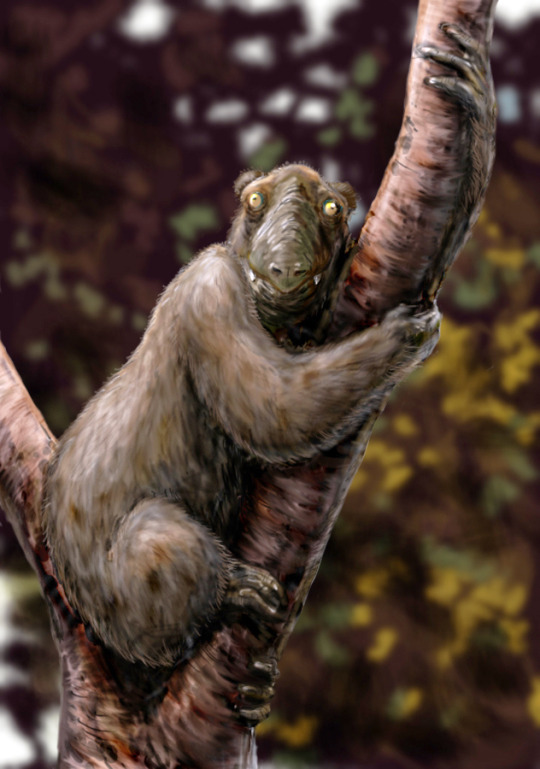
ALF...
(Megaladapis edwarsi, a species of extinct ‘koala lemur’)

7 notes
·
View notes
Photo








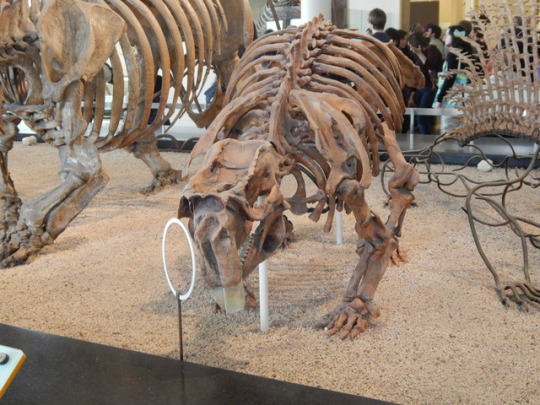

A bunch of photos I took of this rad exhibit of a Paraceratherium with other awesome “mammals”. This was some years ago at the Natural History Museum of New York.
The creatures are:
A big Paracetherium’s skull (referred as Indricotherium), a Gomphotherium, a narwhal (Monodon), a horse (Equus), a Toxodon, a deer (Blastocerus), a giant lemur (Megaladapis), a saber-toothed cat (Smilodon), a ground sloth (Glossotherium), a giant wombat (Phascolonus), and Edaphosaurus, a “proto-mammal”.
-----
Aquí un montón de fotos que tomé a está increíble exhibición de un Paraceratherium con otros asombrosos “mamíferos”. Esto fue hace algunos años en el Museo de Historia Natural de Nueva York.
Las criaturas son:
Un gran cráneo de un Paracetherium (referido como Indricotherium), un Gomphotherium, un narval (Monodon), un caballo (Equus), un Toxodon,un venado (Blastocerus), un lémur gigante (Megaladapis), un tigre dientes de sable (Smilodon), un perezoso terrestre (Glossotherium), un wombat gigante (Phascolonus), y Edaphosaurus, un “proto-mamífero”.
#American Museum of Natural History#AMNH#Paraceratherium#Smilodon#Monodon#Gomphotherium#Edaphosaurus#Megaladapis#Blastocerus#Toxodon#Equus#Phascolonus#Glossotherium#Paleontology#Paleontología#Indricotherium#Synapsida#extinct#narwhal#Pelycosauria#Mammalia#Perissodactyla#Hyracodontidae#Cetacea#Pilosa#Diprotodontia#Marsupialia#My Photos
4 notes
·
View notes
Text
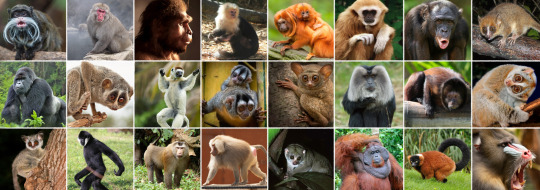
🦍The primate tournament list of candidates has been finalised! Polls will start going up soon!🦧
Thank you to everyone who submitted a species! Here is the full written list:
Basal primates (non-simian primates, including Strepsirrhini and Tarsiiformes)
†Notharctus (Notharctus tenebrosus)
Calabar angwantibo (Arctocebus calabarensis)
West African potto (Perodicticus potto)
Red slender loris (Loris tardigradus)
Bengal slow loris (Nycticebus bengalensis)
Pygmy slow loris (Xanthonycticebus pygmaeus)
Senegal bushbaby (Galago senegalensis)
Brown greater galago (Otolemur crassicaudatus)
Ring-tailed lemur (Lemur catta)
Verreaux’s sifaka (Propithecus verreauxi)
†Archaeoindris (Archaeoindris fontoynontii)
†Megaladapis (Megaladapis madagascariensis)
Madame berthe’s mouse lemur (Microcebus berthae)
Aye-aye (Daubentonia madagascariensis)
Philippine tarsier (Carlito syrichta)
Pygmy tarsier (Tarsius pumilus)
New world monkeys (Platyrrhini)
Wied’s marmoset (Callithrix kuhlii)
Goeldi’s marmoset (Callimico goeldii)
Bearded emperor tamarin (Saguinus imperator subgrisescens)
Golden-headed lion tamarin (Leontopithecus chrysomelas)
Panamanian white-faced capuchin (Cebus imitator)
Central American squirrel monkey (Saimiri oerstedii)
Gray-bellied night monkey (Aotus lemurinus)
Bald uakari (Cacajao calvus)
Madidi titi monkey (Plecturocebus aureipalatii)
Atlantic titi monkey (Callicebus personatus)
Black bearded saki (Chiropotes satanas)
White-faced saki (Pithecia pithecia)
Colombian red howler (Alouatta seniculus)
Brown spider monkey (Ateles hybridus)
Northern muriqui (Brachyteles hypoxanthus)
Yellow-tailed woolly monkey (Lagothrix flavicauda)
Old world monkeys (Cercopithecidae)
Mantled guereza (Colobus guereza)
Zanzibar red colobus (Piliocolobus kirkii)
Nepal gray langur (Semnopithecus schistaceus)
Silvery lutung (Trachypithecus cristatux)
Golden snub-nosed monkey (Rhinopithecus roxellana)
Proboscis monkey (Nasalis larvatus)
Red-shanked douc (Pygathrix nemaeus)
Collared mangabey (Cercocebus torquatus)
Japanese macaque (Macaca fuscata)
Rhesus macaque (Macaca mulatta)
Hamadryas baboon (Papio hamadryas)
Mandrill (Mandrillus sphinx)
Gelada (Theropithecus gelada)
Common patas monkey (Erythrocebus patas)
Bale mountains vervet (Chlorocebus djamdjamensis)
De brazza’s monkey (Cercopithecus neglectus)
Apes (Hominoidea)
Lar gibbon (Hylobates lar)
Pileated gibbon (Hylobates pileatus)
Kloss’s gibbon (Hylobates klossii)
Northern white-cheeked gibbon (Nomascus leucogenys)
Siamang (symphalangus syndactylus)
†Junzi (Junzi imperialis)
Bornean orangutan (Pongo pygmaeus)
†Gigantopithecus (Gigantopithecus blacki)
†Dryopithecus (Dryopithecus fontani)
Western lowland gorilla (Gorilla gorilla gorilla)
Chimpanzee (Pan troglodytes)
Bonobo (Pan paniscus)
†Australopithecus (Australopithecus afarensis)
†Panranthropus (Panranthropus boisei)
†Flores hobbit (Homo floresiensis)
†Neanderthal (Homo neanderthalensis)

The first set of polls will go up as soon as I have finished writing the descriptions! In the meantime, I would appreciate if you could share this tournament around- it won’t be much of a tournament if there aren’t that many people voting! In going down the research rabbit hole I’ve found so many interesting species and stories, and I promise learning about them here will be worth your time!
#primate bracket#tournament#tumblr tournament#poll#polls#primate#primates#extinct primates#biology#animals#zoology#please let me know if I made a mistake anywhere!
101 notes
·
View notes
Audio
Primate Arena @ Levontin7 March 2019
0 notes
Photo





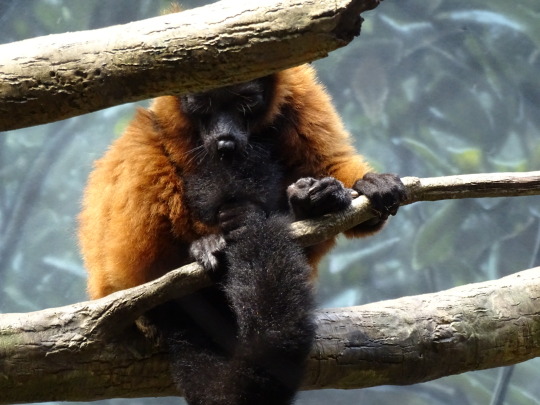




World Lemur Day
World Lemur Day is held each year on the last Friday of October.
The 2020 World Lemur Day is Friday, October 20, 2020.
What loves to bask in the early sunlight, has sweat glands in their wrists, and is the national animal for Madagascar? If you said the lemur, then you guessed right. They’re incredibly adorable and have humanoid characteristics that make them relatable. Lemurs are a unique group of primates, land mammals to be precise.
From their flat fingernails and social habits, a lemur offers a fascinating subject to explore. We will investigate some facts to understand why they need protection from human endangerment.
Interesting Lemur Facts
1. Madagascar is their Only Home
The fact that kicks us off is their home. The island of Madagascar is the only habitat for the total lemur animal population in the world. This island is located 250 miles off the coast of Africa. Some have established a natural home close by in the Comoro islands which are a volcanic group of islands. 40 million years ago, they traveled here on floating leaf vegetation and adapted to a lemur Madagascar world without predators.
2. Lemur Heights Range Between 2.5 Inches and 2.5 Feet Tall
How big is a lemur? Facts say that before hunting wiped them off the land, lemurs the size of gorillas known as Megaladapis edwardsi roamed the quaint island of Madagascar. The next best giant lemurs are the indri which can be as tall as 2.5 feet according to the facts. A baby lemur is dependent on its mother for sustenance. You can get more of such lemur facts from this source.
3. Their Groups Are Run By Females
Facts such as these are scientifically proven over long periods of observation. The center of their society is a female leader who rises to the occasion of directing a social group. This happens quite rarely in mammals, where male dominance stands as the facts of nature. Lemur females show signs of pure dominance in the way they mark their territories within the group. Another fact is that they snatch food away from the males, kick them out of sleeping spots, and show actual physical aggression. These facts are cemented by the fact that they don’t eat before the females have had their fill. Depending on how many lemur species are there, the social dynamic is maintained throughout the island.
4. ‘Lemur’ Means ‘Evil Spirit of The Dead’ In Latin
The etymology of the name dates back to the Lemuria festival in Rome where ‘lemures,’ evil spirits of the dead, were chased away by banging bronze pots. Crazy facts about locals are that they believe animals to be their ancestors due to their vocal cries and nocturnal behaviors. Other facts answer the question of what does a lemur looks like, and mostly they possess human-like characteristics and ghostly face
5. Lemurs are Incredible Pollinators
Facts about the ruffed lemurs are fascinating, especially since they are the world’s most significant pollinators. They usually get pollen on their fur as they seek out fruits and nectar and thus pollinate other plants this way. Palm trees and hardwoods depend entirely on these mammals.
6. They Can Achieve Celebrity Status
Whenever animals learn a new skill, preferably a difficult one, they instantly become more noticeable within their group. Some of the lemur facts support this primate behavior. The more attention they receive, the more affiliative bonus points they earn. These facts of affection include grooming, company, and touch, which they don’t necessarily have to reciprocate due to their celebrated success.
7. Indris Sing in Groups
Indris is the weirdly talented acapella group of the animal kingdom. The males and the females sing. They do this by synchronizing while the younger animals sing out of sync to receive recognition. Incredible fact, right?
8. They Are the Only Other Primates With Blue Eyes
Primates have a variety of eye shapes and colors including the big-eyed lemur, but blue irises are a rare feature in mammals. The only mammals that have blue eyes are human beings and blue-eyed black lemurs called Sclater’s lemurs. But their endangerment is still a looming threat. They have lost up to 80% of their natural home in just 20 years.
9. ‘Stink Fights’ Help Resolve Contention Among Them
Especially during the breeding season, some facts come to light, and these include the stink fights by ring-tailed lemurs. With scent glands in their writs and shoulders, they produce a pungent odor that is short-lasting. The dispute is mediated only when one gives up as they waft the strong smells into each other’s faces with their tails.
10. Adorably Intelligent
The last fact is about their intelligence. The sifaka lemurs are surprisingly great communicators. They use signals and pitch intonations, laughs, and cries to send different messages. Others growl, bark, meow, and use a different combination of scents. They also have shown different humanoid personalities like shyness and aggressiveness.
Conclusion
With all these facts, we realize how important it is to protect these creatures. Those critically in danger include the silky sifaka lemur. In Madagascar, logging, agriculture, hunting, and collecting has made them the world’s most threatened mammals.
We cherish your opinions on wildlife, so send your comments on your favorite facts and any questions.
Source
#World Lemur Day#WorldLemurDay#last Friday in October#30 October 2020#Bronx Zoo#my favorite zoo#New York City#animal#original photography#travel#summer 2019#2018#Ring-tailed lemur#USA#vacation#close up#Coquerel's sifaka#Madagascar!#indoors#flora#nature#fauna#Red ruffed lemur#tourist attraction#international day
6 notes
·
View notes
Text
Tag
Tagged by: the beautiful @svxngali
Name: Crow (?) Ask me.
Zodiac: Taurus
Height: 5′8
Hogwarts house: Hufflepuff
Last thing I googled: “megaladapis peloriadapis edwarsi” I was looking for a reconstruction of it...
Favourite musicians: The Who, Townes Van Zandt, Them Crooked Vultures, James Mcmurtry, Grinderman, Todd Snider, Tupac, Black Sabbath, The Beatles...
Song stuck in my head: Kinect Star Wars “I’m Han Solo” since my partner introduced to me. I hate it. I don’t even like Star Wars.
Following now: 121
Followers: 67...
Do I get asks: Nope, I’d love to though
Amount of sleep: Usually around 6 hours or so.
Lucky number: 19
What I’m wearing: Uh. A Dr. Strange (comics) t-shirt and jeans.
Dream job: Already living it. Animal rehabilitation and education. Taxidermy. Bone articulation. Falconry.
Dream trip: Göbekli Tepe.
Favourite food: Good stir fry. Roasted brussel’s sprouts. Good Chinese. Pho.
Languages: English, Irish, Latin
Favourite song: "Keep Me In Your Heart For a While” - Warren Zevon, and “A Piece of You” - Joni Mitchell
Random fact: I’m your friendly neighborhood taxidermist and bone articulation expert. Ask me about my skull collection? You all probably already know this. I want a sky burial. I feed the local vultures. I’m an apprentice falconer.
Aesthetic: You tell me?
Tagging:@prettysamurai, @prplhawk, @lukecageforhire, @sevenbulletsavior, @dcvilcomplex, @hellsainted, @wardogsong, @dcviltongued, @deviltoothed, @luckstruckleo, @visixnaryx, @sheeradrenaline,
5 notes
·
View notes